Based on the Stephen King book of the same name, Stanley Kubrick’s The Shining is an instantly recognisable and influential piece of horror film history. Even if you haven’t seen The Shining yourself, you know a lot more about it than you should through parodies, culture references and word of mouth.
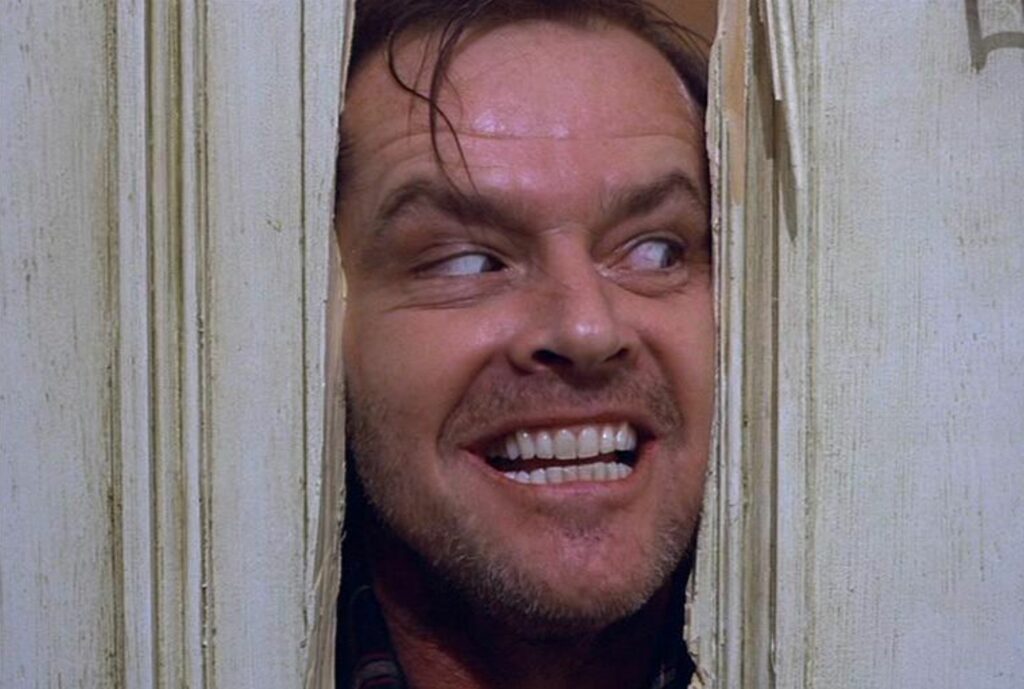
What it is about The Shining that gave it this enduring power? 40 years since the initial release in 1980, we explore the key aspects that brought The Shining to prominence.
Cinematography
Even Stephen King, for all his misgivings about the movie referred to The Shining as a ‘beautiful film’. Stanley Kubrick’s choices regarding the set designs and cinematography have created scenes that became iconic in and of themselves.
How many times have you seen the hall of blood used in modern film? How many times has the ‘Here’s Johnny’ line being quoted and referenced? How many of you need context to understand where it all originated from?
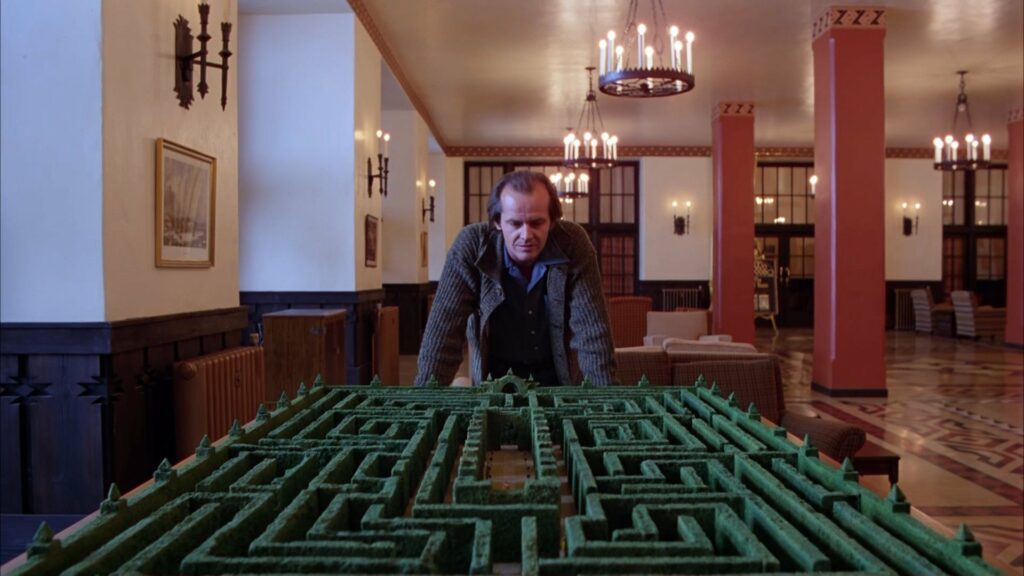
Kubrick used his successful brand of directing to create scenes that were breaking cinematic boundaries and subverting what audiences had come to expect from the famed director. He always avoided the use of blood – so the scenes with an abundance of blood are both visually striking and all the more terrifying for their rarity.
The director’s talent is evident in how the story often forgoes the use of dialogue or music. Jack Torrance is often seen standing alone in a spacious, empty room, creating a sense of isolation and distance from the rest of the household. Danny Torrance is filmed at head level, lowering the camera so that you, as the audience, feel small and vulnerable to the surroundings.
In this, Kubrick creates a film that is not only visually pleasing, but where film technique itself tells a story.
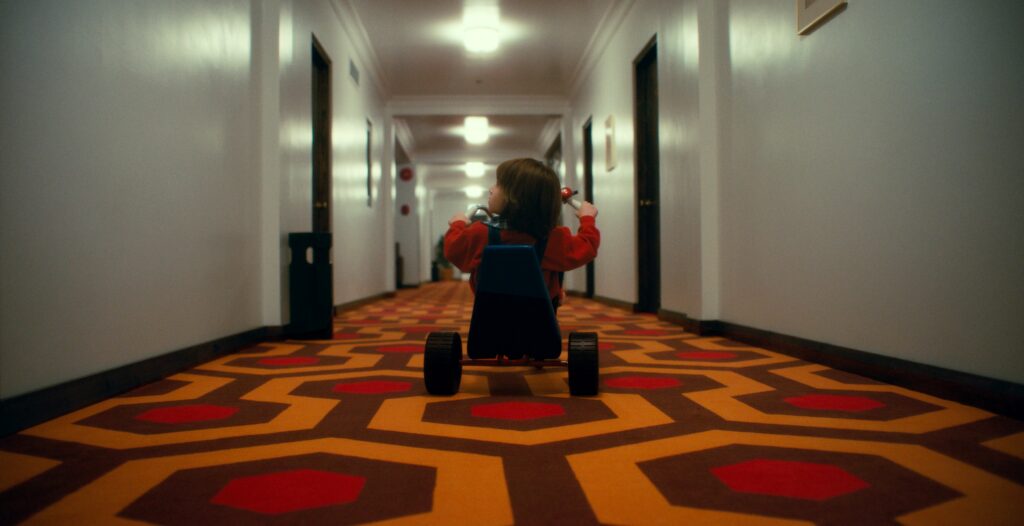
Acting
There is no denying that Jack Nicholson as Jack Torrance was something a scene stealer. Jack Torrance is a troubled writer struggling with finding purpose in his career and within his family. This, as Kubrick himself puts it, means that “Jack comes to the hotel psychologically prepared to do its murderous bidding. He doesn’t have very much further to go for his anger and frustration to become completely uncontrollable. He is bitter about his failure as a writer. He is married to a woman for whom he has only contempt. He hates his son. In the hotel, at the mercy of its powerful evil, he is quickly ready to fulfil his dark role.”
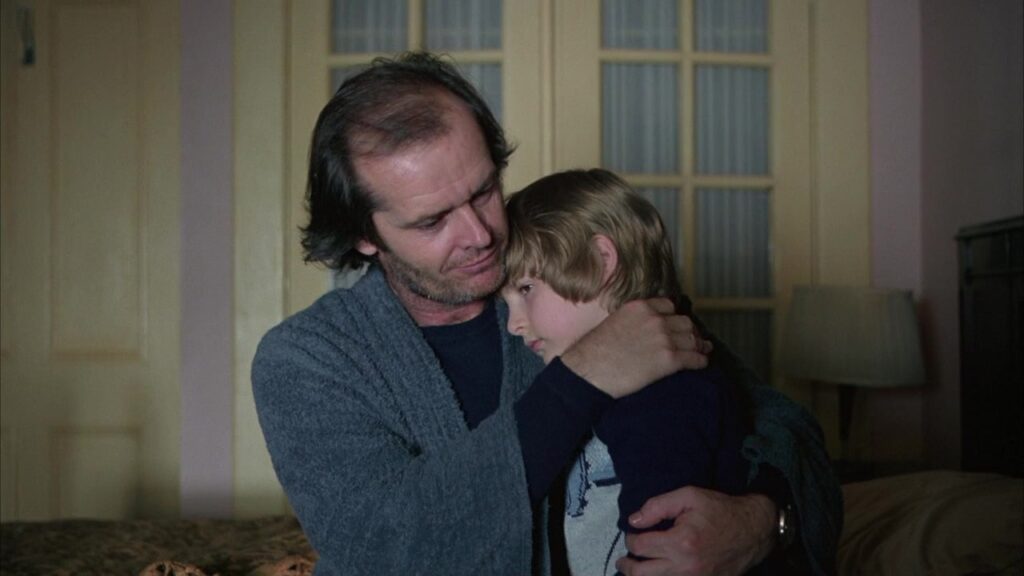
The descent of chaos that Jack succumbs to is visually uncomfortable. Scenes that would be deemed ‘normal’ conversations between family members quickly descend into rage-fuelled rants, and the feeling of discomfort grows with every derailed scene. Nicholson acts out Torrance’s mental collapse with a kind of intensity that pins you down, waiting for the inevitable fallout with bated breath.
Danny Torrance, the little boy with ‘the shining’, is played by Danny Lloyd. The littlest Torrance provides a strong emotional core to the story. In his scenes with his father, he is tense and quiet, shrinking under Jack Torrance’s growing rage-filled presence. At the age of five, Danny Lloyd played this difficult character well – especially since the actor had not been told he was filming a horror movie. The scenes of little Danny riding his tricycle through the vast empty hallways of the hotel have become synonymous with tension-building, as the audience waits for the next jump scare. It’s the character’s clear obliviousness to the danger that makes the situation all the more suspenseful for the audience.
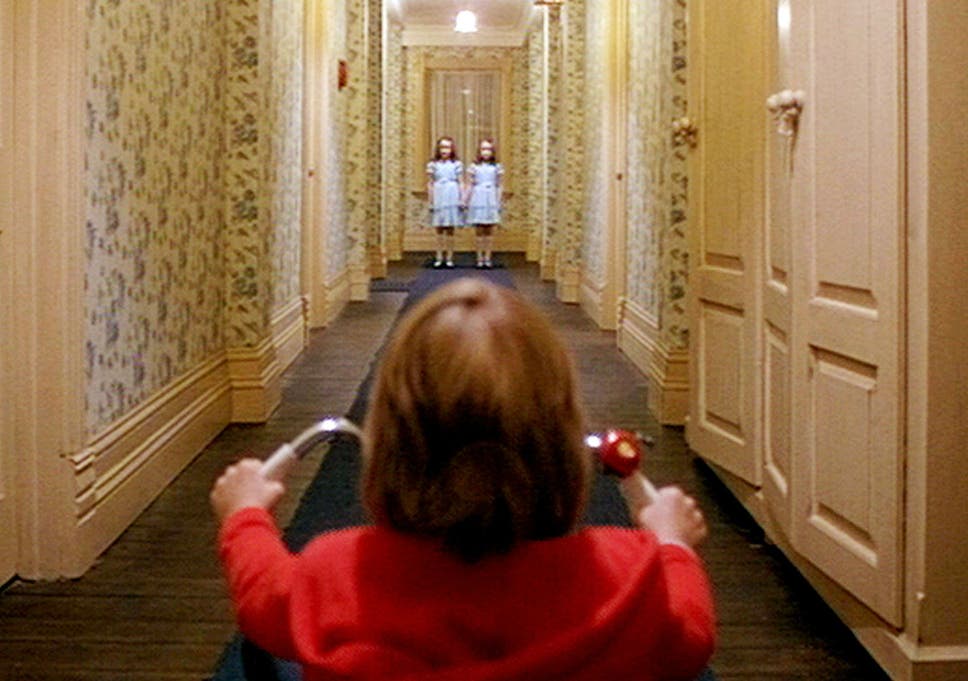
Equally praise-worthy is Shelley Duvall as the wife of Jack Torrance, a role she plays with genuine fear and anxiety. The ‘Here’s Johnny’ scene greatly owes its renown to Duvall’s performance, wide-eyed and screaming in sheer terror on the other side of the door. Wendy Torrance’s fragility emphasises the her husband’s wrath and vice versa, the strength of each actor’s performance giving poignancy to the other.
At this point it becomes important to mention that the power of Duvall’s performance has a dark source. The actress was being traumatised by Kubrick, who antagonised his actors in order to give the film what he perceived to be its psychological horror, and the director “frequently kept her isolated, cut many of Wendy’s lines and forced her to perform the iconic ‘baseball bat’ scene an exhausting 127 times. The scene entered The Guinness Book of Records as the most takes ever for a scene with spoken dialogue and her shaking hands and red, puffy, eyes are the result of genuine crying.”
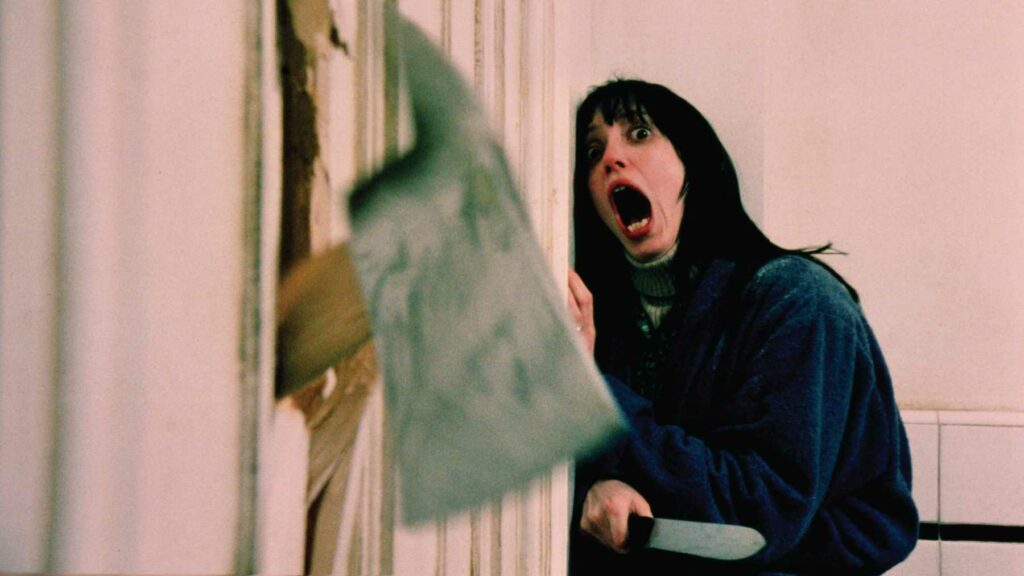
In The Complete Kubrick, Duvell herself speaks about the experience: “I was really in and out of ill health because the stress of the role was so great. Stanley pushed me and prodded me further than I’ve ever been pushed before. It’s the most difficult role I’ve ever had to play.”
Themes and Meaning
In a film like The Shining, where so much is representative of a character’s mental state, it makes sense that questions and theories arise.
What does the ending mean? What does the man in the dog costume represent? Was Jack Torrance always destined to lose his mind or did isolation drive him to it? Is the hotel itself haunted or is it a representation of mental distress? And, a less common question but one that is interesting to consider – is the darkness at the Overlook Hotel the same as the darkness in It?

It is in these mysteries that people will find reason to revisit the film again and again, searching for something they missed last time. By leaving so much of the movie open to interpretation, Kubrick ensured that conversations would continue around The Shining, ensuring its continued relevance. Just as importantly, different interpretations mean people attach themselves to the story in different ways, leading to unique experiences each time. This is not something most films can pull off, but psychological horror or thrillers often allow for personal readings.
The disjointed nature of The Shining’s horror elements also adds to this. Although there are confirmed histories such as the sisters who were murdered by their caretaker father, there are as many moments that don’t seem to fit at all. The blood hallway and the person in the bear/dog costume are examples of imagery that go unexplained, yet feel heavy with meaning.
In an interview, Kubrick said that “Reason can take you to the border of [knowledge and understanding], but from there on you can be guided only by your imagination. I think we strain at the limits of reason and enjoy the temporary sense of freedom which we gain by such exercises of our imagination.”
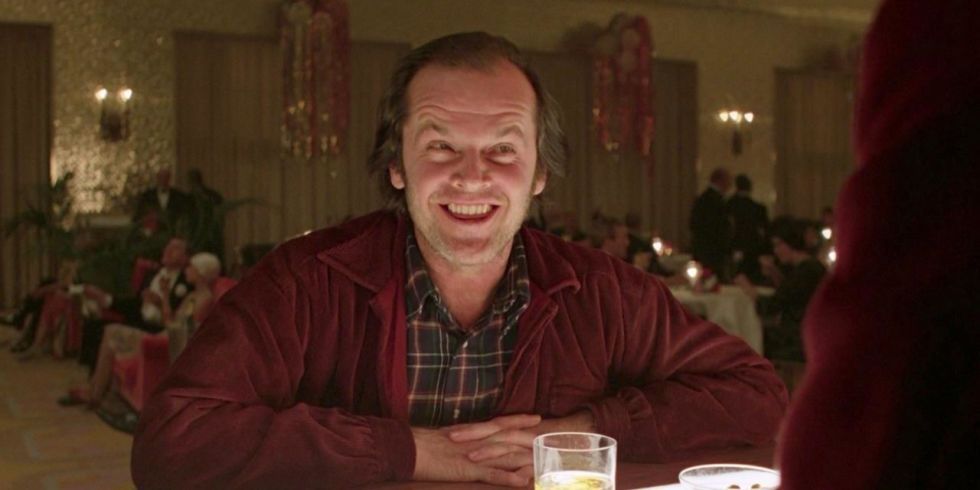
The Shining has remained a cultural influence over these years because of the beauty of its cinematography, the calibre of its cast and the enduring mystery it generates. It tells a horror story, yes, but The Shining is also about the strength of humanity, about fear and abuse, about who the real monster is. These are topics that resonate with audiences regardless of how many years have passed.
